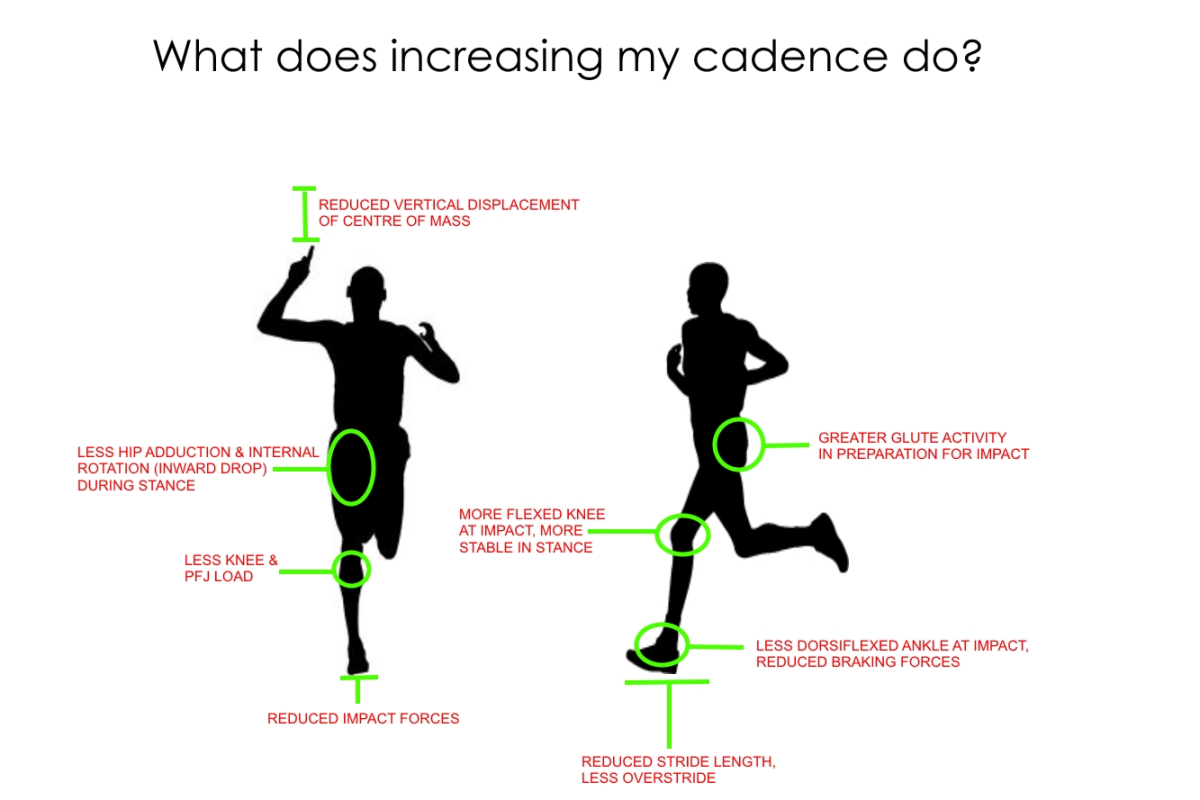Faster Arms, Faster You
 Peter Richards
August 04, 2020
Peter Richards
August 04, 2020
 Improving your cadence or strides per minute will support you to becoming a faster runner by improving your running economy and efficiency which will mean you will take longer to fatigue at any given pace. Many runners have a low cadence as they over-stride and tend to heel-strike.
Improving your cadence or strides per minute will support you to becoming a faster runner by improving your running economy and efficiency which will mean you will take longer to fatigue at any given pace. Many runners have a low cadence as they over-stride and tend to heel-strike.
When it comes to cadence, the ‘magic’ number is 180 (i.e. 90 strides per foot per minute)–or so goes the conventional thinking, however cadence hinges on pace. Even Olympians take fewer steps per minute when they run at slower speeds. In fact, your easy runs and intervals or 5-K runs may differ by up to 20 steps per minute. That said, if your cadence at 5-K pace is below 180, it needs a boost.
Here's a 3-step cadence optimisation plan for you to start today.
Firstly, consult your smart watch (or review your Strava graph and click on the “cadence” button) to establish your baseline cadence for your training speeds – long run, tempo long intervals, 5k Parkrun and 1k intervals.
Then for each ‘run pace’ record your cadence, then add five percent. This is your goal cadence for each pace. According to biomechanics researchers, five percent is an attainable target that is still big enough to significantly reduce impact. So, for example, if your easy run cadence was 160, aim for 168; if your tempo was 166, strive to hit 174, etc. Practically, it will be easier for you to improve your cadence during your long and tempo runs as you have more time to consider your running form however simply having targets for all will mentally motivate you to improve.
Lastly, practice makes for improvement. Start by adding short distances into your runs at your ‘new’ cadence. Perhaps the easiest way to quicken your step is to run with a metronome (there's an app for that simply go to your App store and search runner’s metronome). If you prefer to run with music, then Google ‘cadence running song playlist’ to find tunes with beats that match your desired cadence. With either your stride will ‘adapt’ to the cadence you are hearing. Alternatively, monitor your progress with a 30-second cadence check every few kilometres, through your smart watch or count your steps for 30 seconds and multiply by two. To improve your cadence whilst running simply start swinging your arms faster – faster arms = faster legs! The swing of your arms should, ideally, be forward/backward with a 90o angle at the elbow rather than across your body.
To accelerate improvement, schedule ‘Fast Feet’ or one of the other sessions into your weekly run program (see below). If you're struggling with the new target, lower it by two to three percent. Practice that revised cadence for three weeks, then bump it back up again. Practice and increasing your cadence over time will ensure neuromuscular adaption and muscle memory which will ensure your cadence becomes second nature even when your start to fatigue during long runs or events.
Faster Arms, Faster You.
Weekly workouts train your legs for a faster turnover.
Fast feet (excellent for all runners as part of warm-up)
How: Using short, quick strides, and working your arms, take as many steps as you can in 10 meters. Keep ground contact as short as possible. Jog for 10 meters. Repeat five times.
Race-pace tester (A great variation of a Fartlek or speed play session)
How: Run Fartleks of 30 seconds, 1 minute, 2 minutes, and 1 minute at 5-K pace. Jog one minute between reps. Do two sets. Count your steps or use a metronome during each rep of the second set.
Downhill sprints (for the more experienced runner)
How: After a recovery run or long run, do five accelerating sprints down a gentle grade of 150 to 200 meters, reaching top speed at the bottom. Walk back up for recovery. This is easier as you are using gravity on the downhill to quicken your cadence.
Finally, simply increasing your cadence will make you go faster, but to maintain that speed there is a need to ensure your biomechanics, body posture, muscle strength, activation and mobility are also supporting you as a more improved runner.
